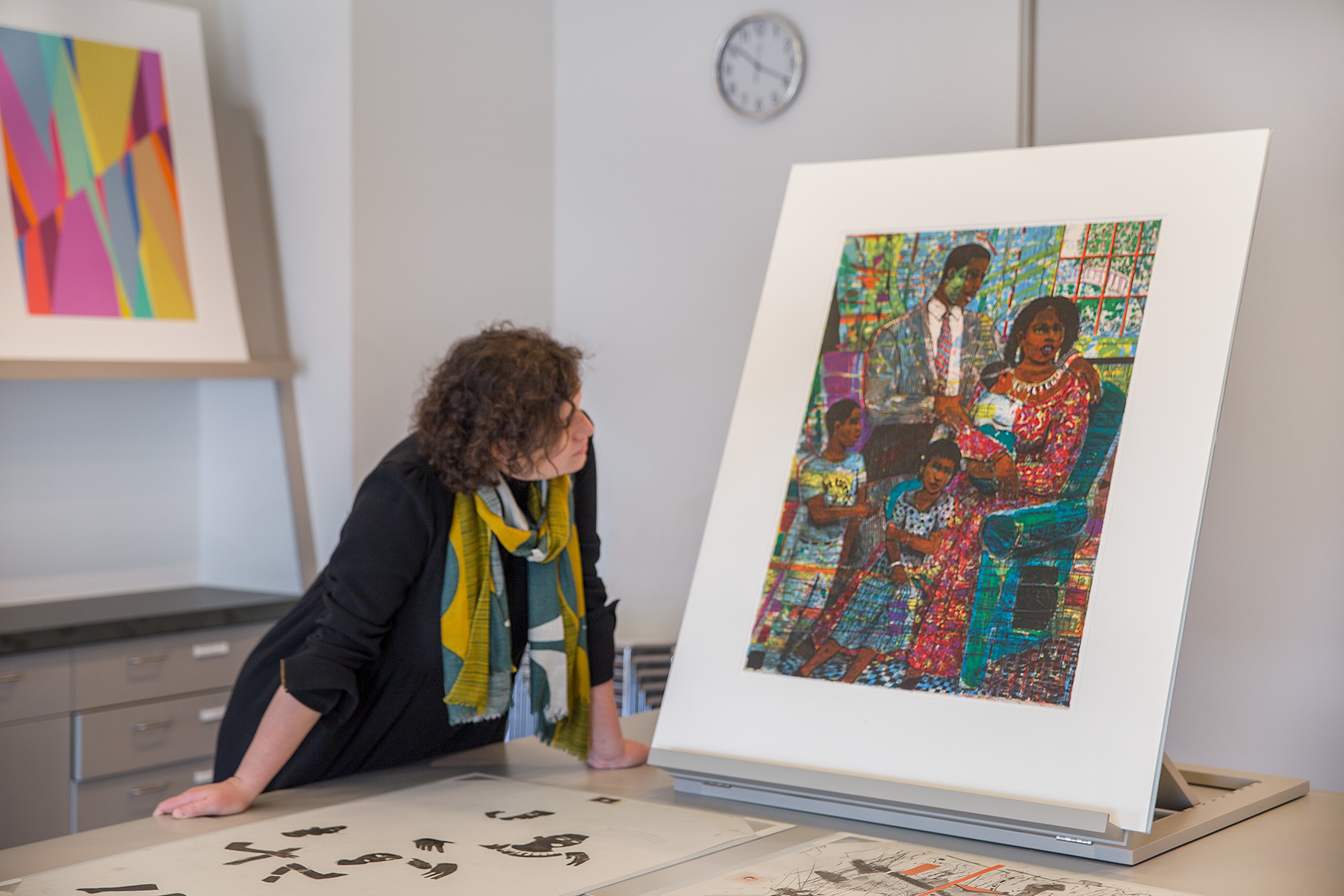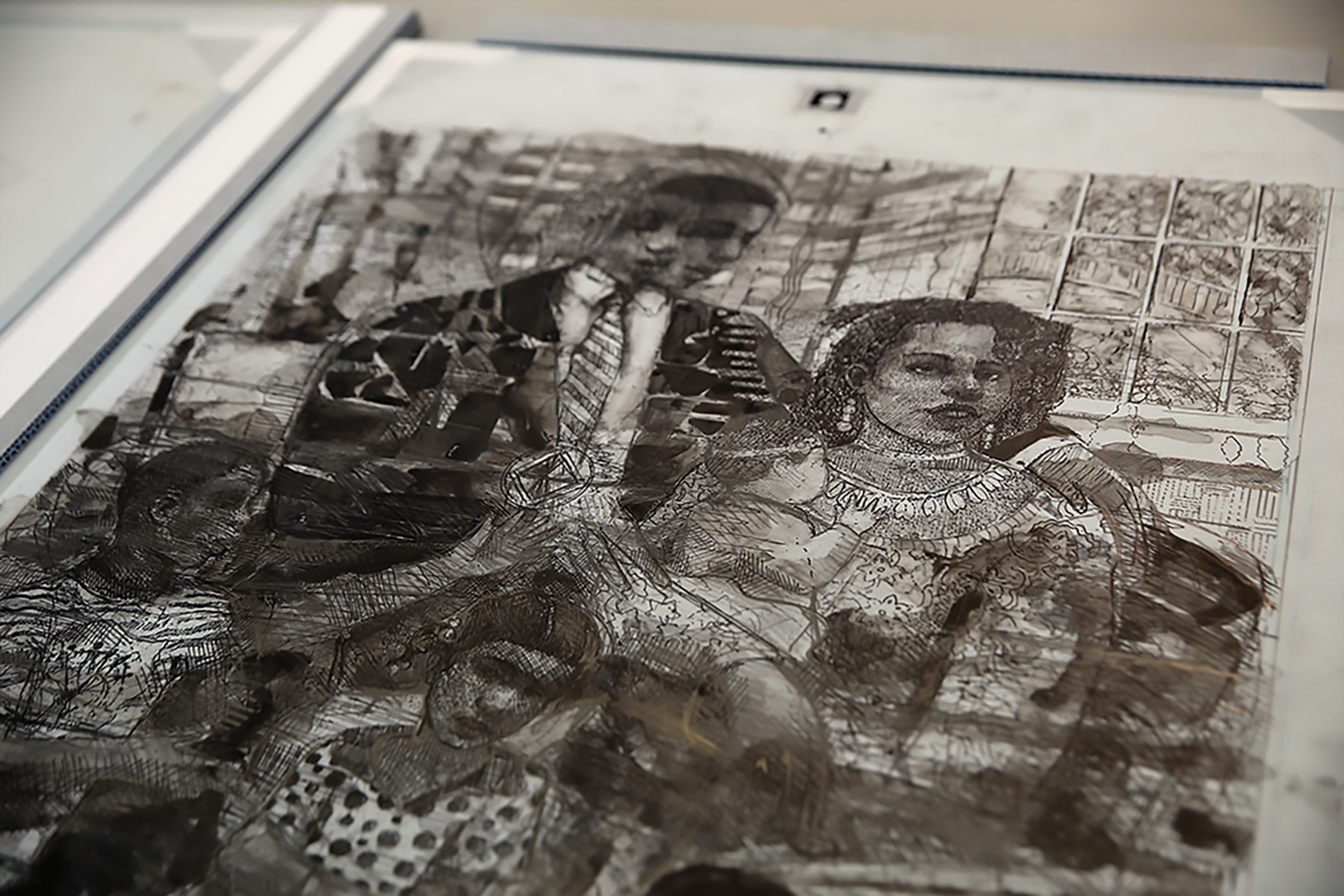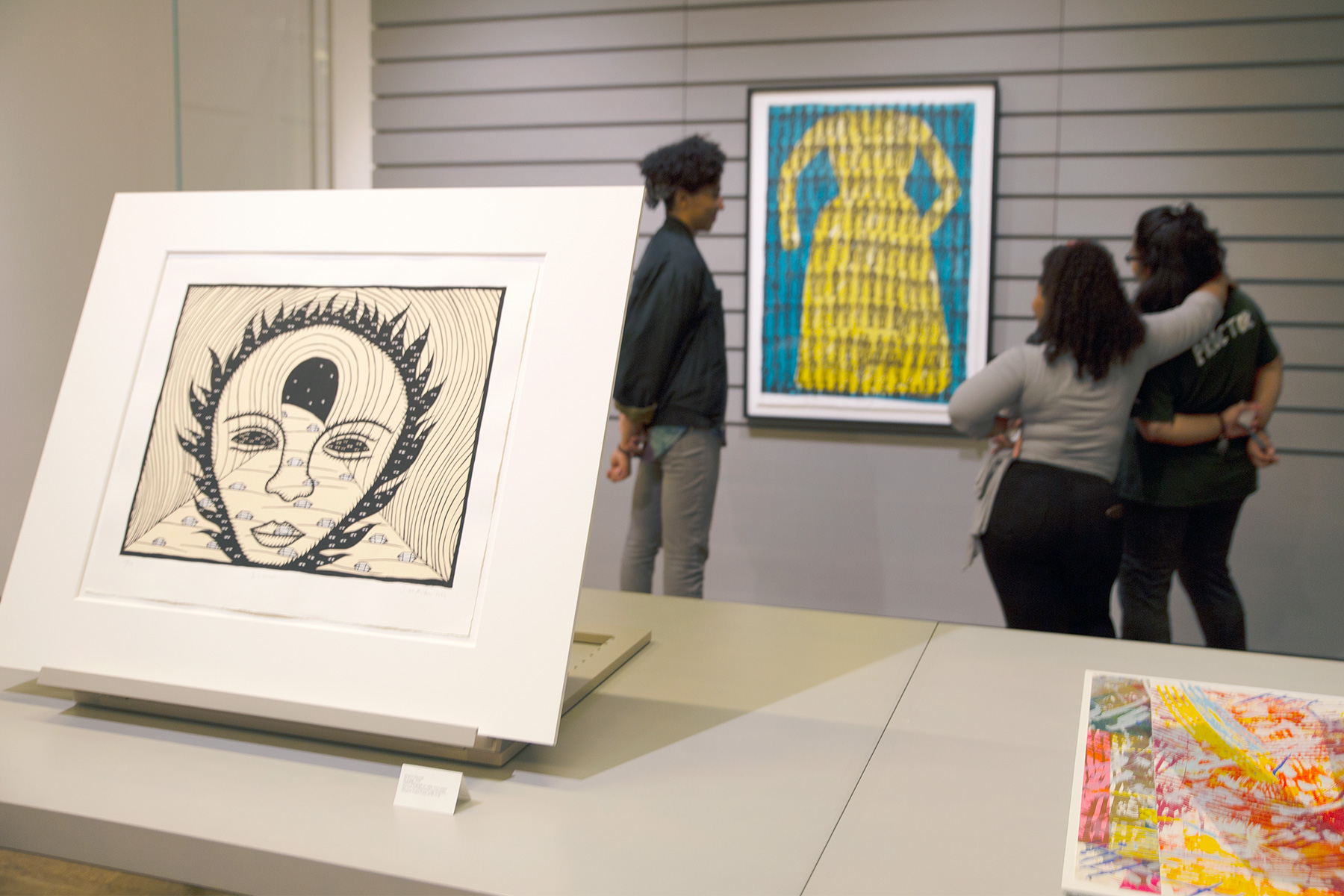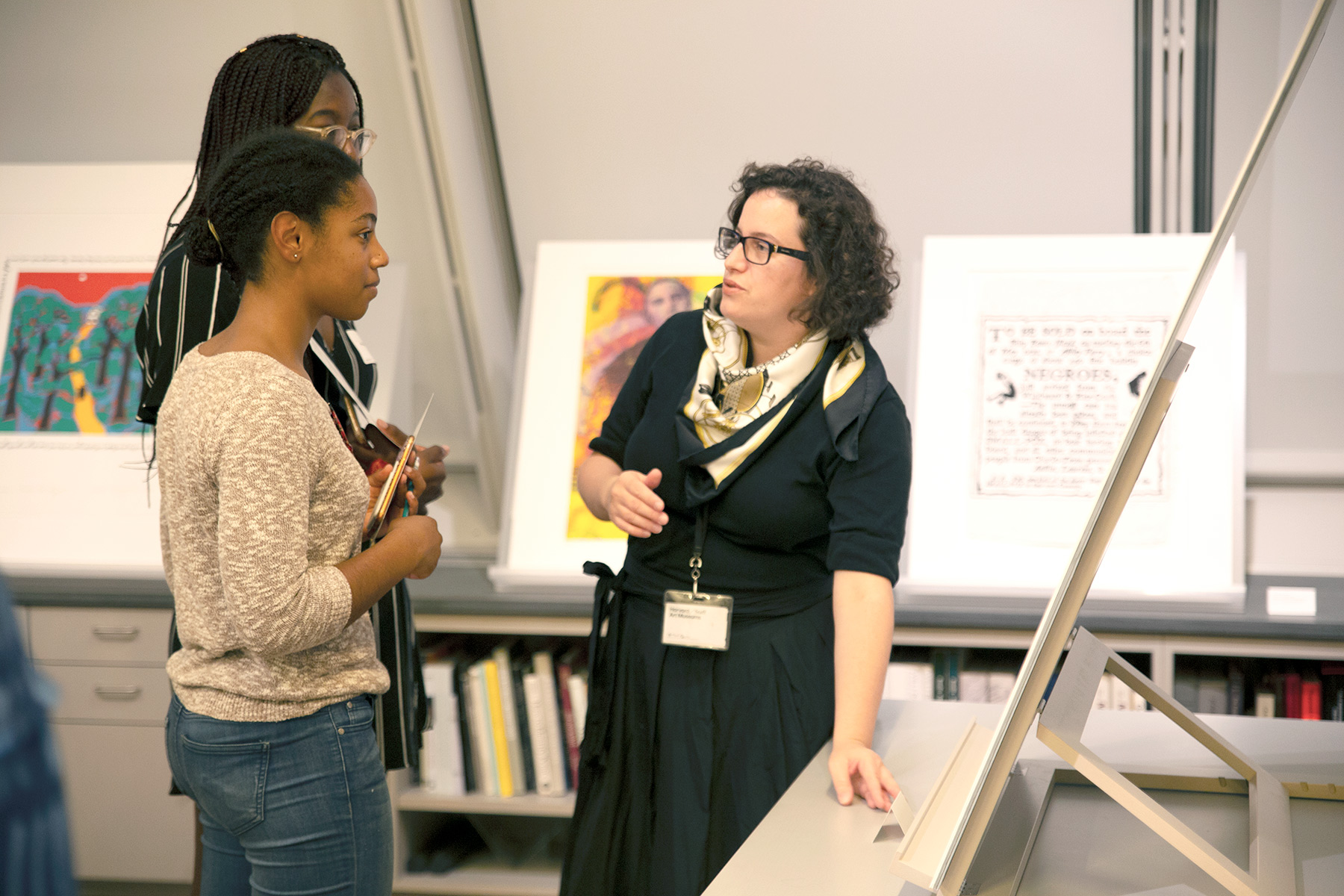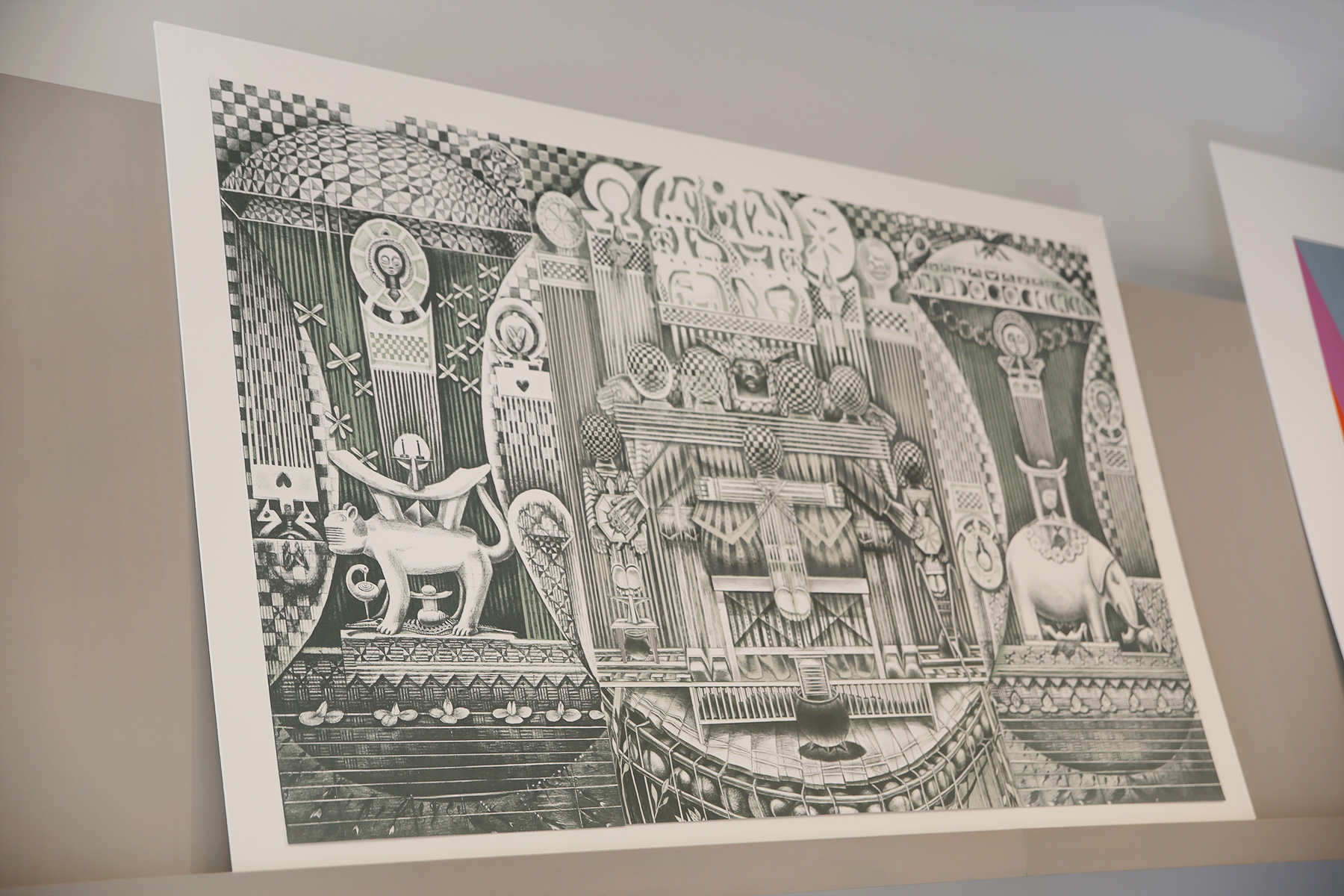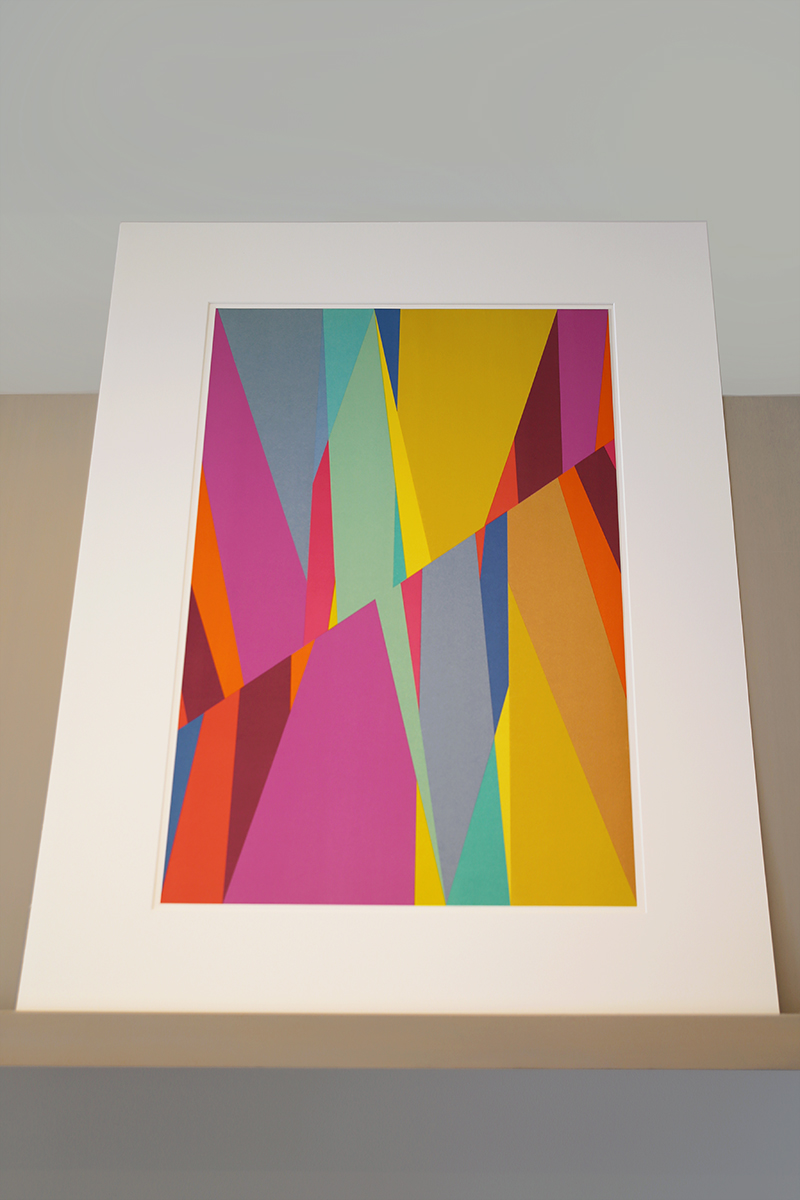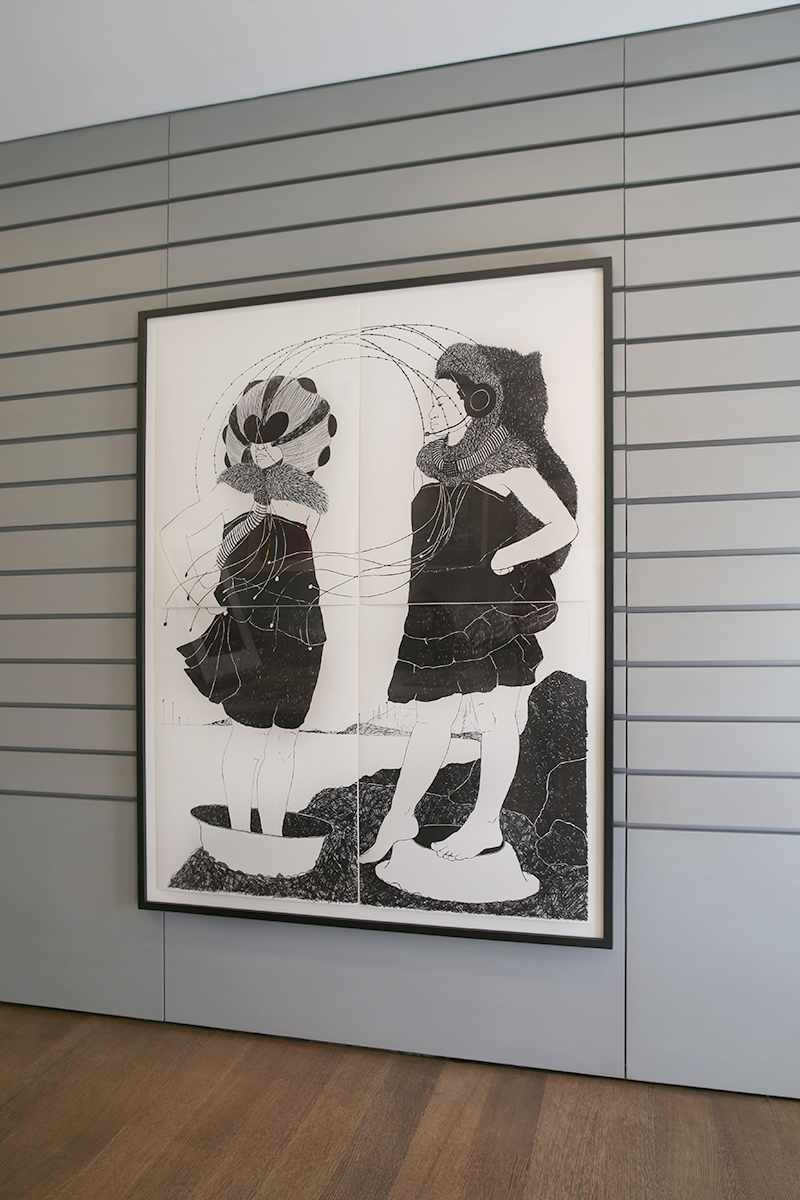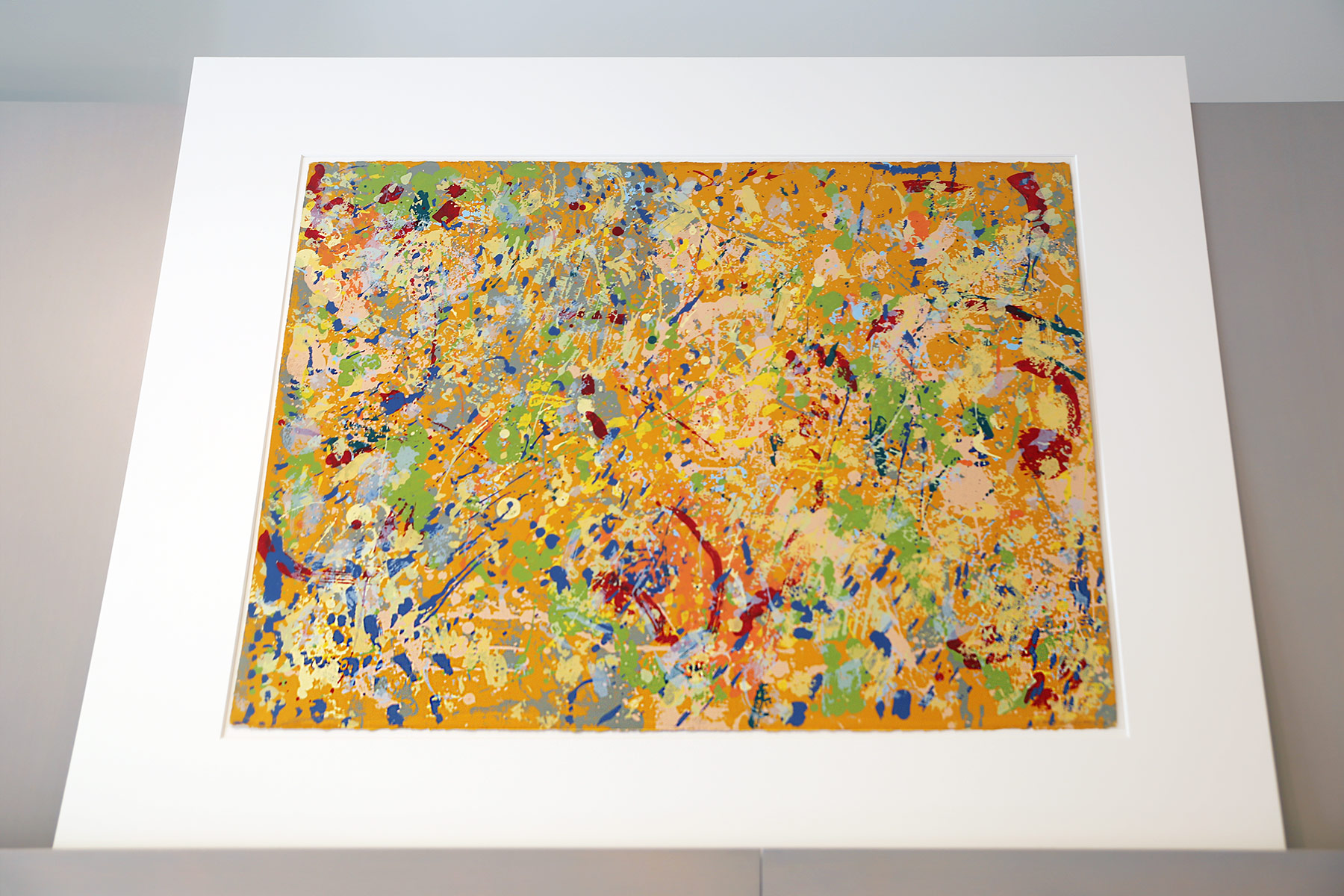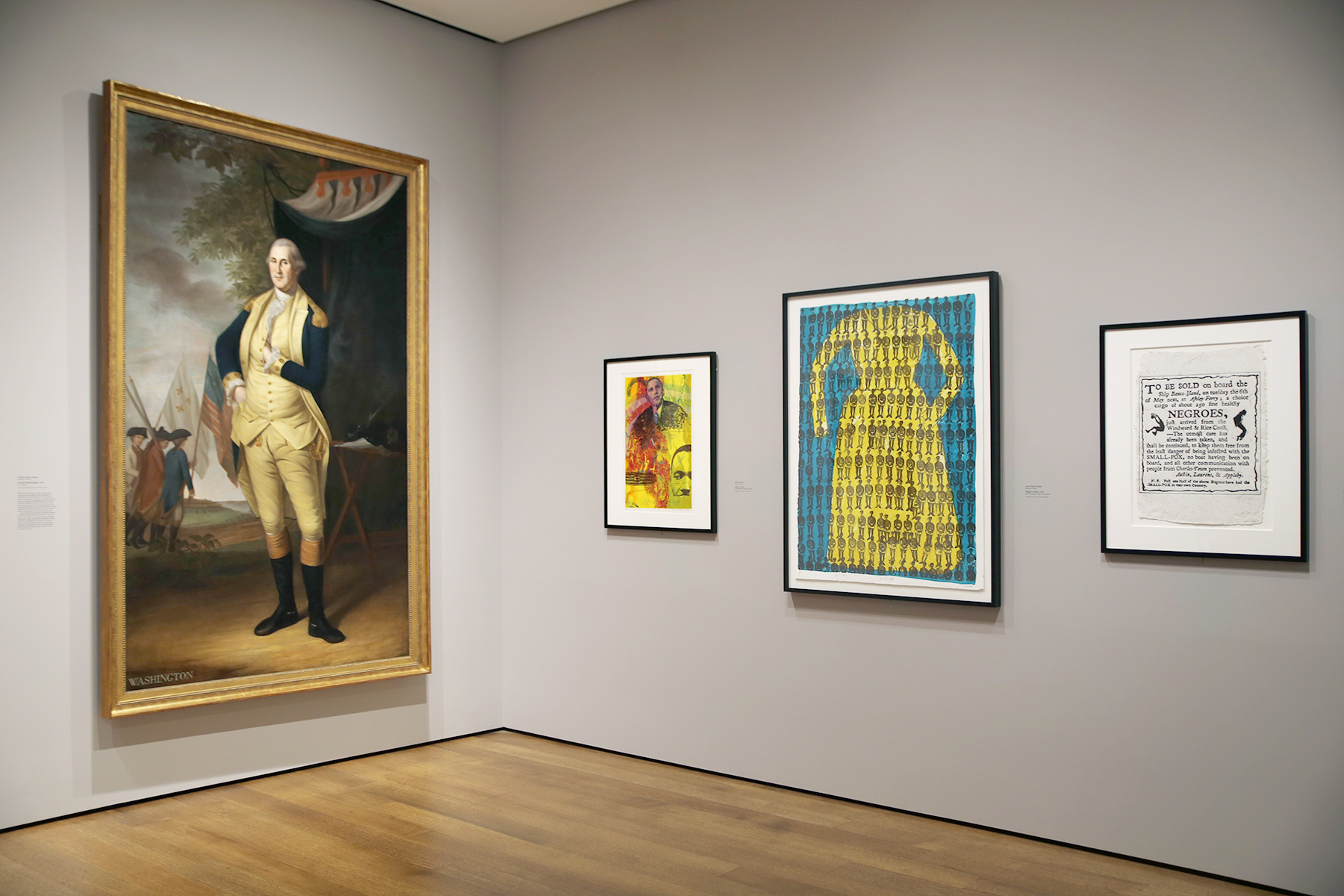Founded by master printer Allan Edmunds, the Brandywine Workshop aims not only to spur innovation in the craft of printmaking, but also to provide educational opportunities and outreach to youth and artists from historically underrepresented communities. Over nearly five decades, the workshop has offered short-term residencies for artists, many of whom have gone on to become highly influential. Visiting artists work with Edmunds to create a print (or prints), and their work becomes part of the workshop’s collection and archives. Since the 1990s, the workshop has given or sold portions of its holdings to prestigious institutions around the country, including the Library of Congress and the Smithsonian Institution.
Teaching Opportunity
The acquisition of the portfolio—tailored to support the museums’ teaching mission, rather than representing a standard sampling of Brandywine prints—was a team effort. Assisting Rudy and Schneider Enriquez was Harvard student Eloise Lynton ’17. The team also consulted Harvard History of Art & Architecture professors Jennifer Roberts and Sarah Lewis, as well as Ruth Fine, a former modern art curator at the National Gallery of Art.
During the acquisition process, Edmunds agreed to be interviewed about the workshop’s history and technical aspects of printmaking. The notes and transcript from his interview with Christina Taylor, assistant paper conservator in the Straus Center for Conservation and Technical Studies, will serve as valuable reference material for future conservators and curators who work with the prints.
Harvard faculty were especially eager to see the prints enter the museums. In fact, within days of the works’ arrival on campus last spring, faculty used several prints in their seminars and student research.
For example, Sam Gilliam’s Pretty Boxes (1993), Untitled (Philadelphia) (1987), and Wissahickon (1975) were shown during the Visual and Environmental Studies seminar Critical Printing, co-taught by Jennifer Roberts, the Elizabeth Cary Agassiz Professor of the Humanities in the Department of History of Art and Architecture, and Matt Saunders, the Harris K. Weston Associate Professor of the Humanities in the Department of Visual and Environmental Studies.

